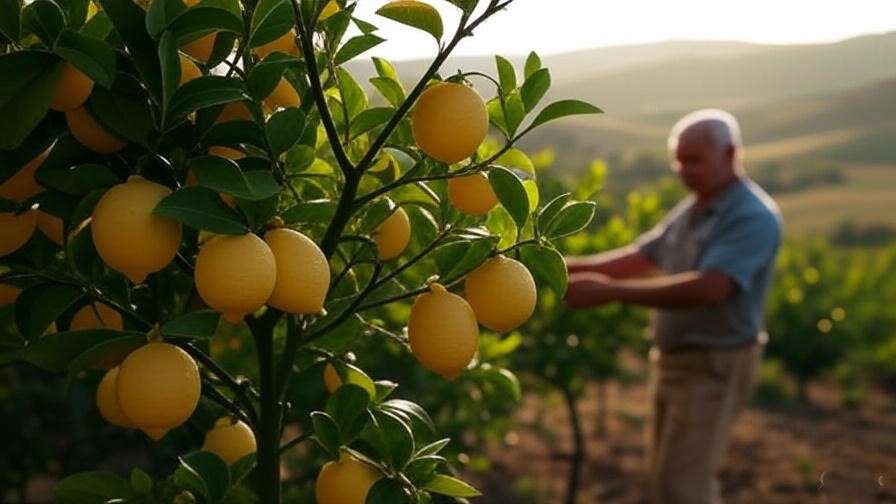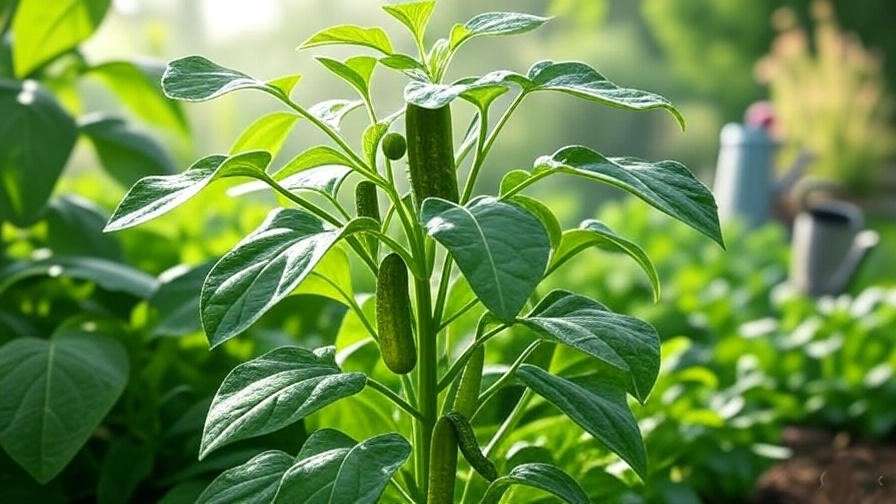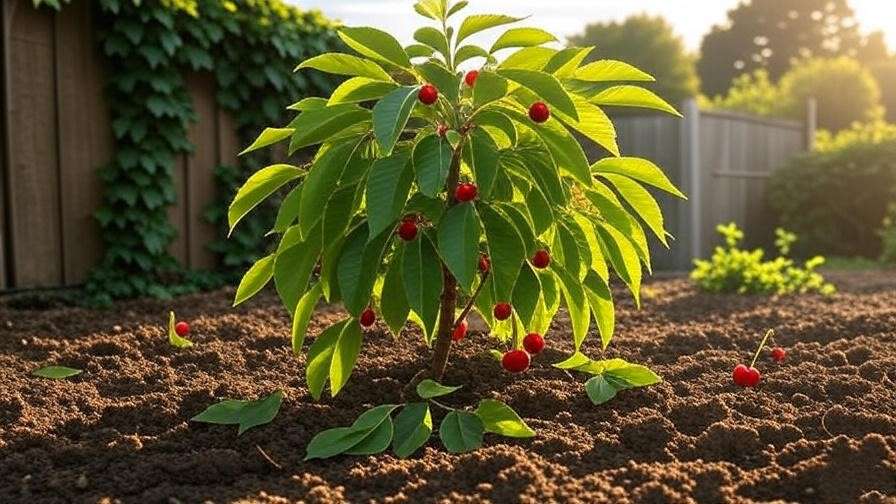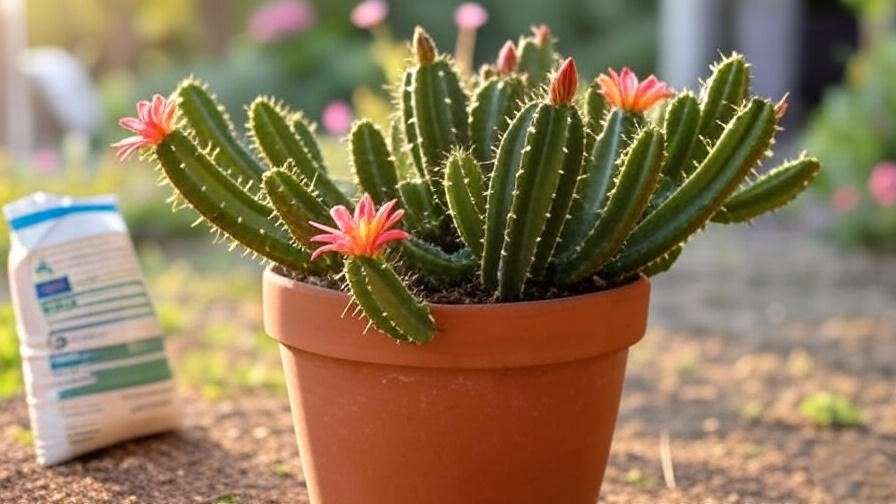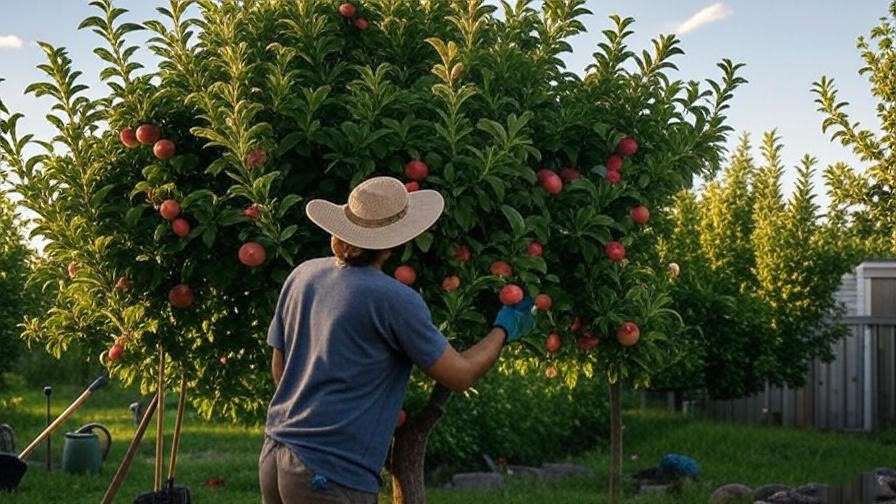Did you know organic lemon production can increase soil health by 25% while fetching premium prices in global markets? As sustainable farming gains momentum worldwide, organic lemons are emerging as a game-changer for growers seeking eco-friendly profits. With rising consumer demand for organic citrus and growing concerns about chemical farming’s impact, mastering the art of growing organic lemons addresses a critical need for farmers and enthusiasts alike. This comprehensive guide, backed by agricultural research and expert insights, offers step-by-step strategies to cultivate thriving lemon trees sustainably. Whether you’re a beginner or an experienced grower, discover how to boost yields, enhance soil vitality, and tap into lucrative markets with organic lemons.
Understanding Organic Lemons and Their Role in Sustainable Agriculture
What Are Organic Lemons?
Organic lemons are citrus fruits cultivated without synthetic pesticides, herbicides, or fertilizers, adhering to strict organic certification standards set by bodies like the USDA or EU. This process involves natural pest control, organic soil amendments, and sustainable water management, ensuring both environmental health and product purity. Certified organic lemons are free from chemical residues, appealing to health-conscious consumers and supporting long-term soil fertility. Rich in vitamin C, antioxidants, and flavonoids, these lemons offer nutritional benefits that conventional counterparts often lack due to chemical interference.
The certification journey requires a three-year transition period, during which farmers adopt organic practices and undergo regular inspections. This commitment pays off with higher market value and a reduced ecological footprint, making organic lemons a cornerstone of sustainable agriculture.
Why Organic Lemons Matter in Sustainable Farming
The global organic food market is projected to reach $500 billion by 2027, with citrus fruits like organic lemons leading the charge, according to the Organic Trade Association. Their cultivation reduces chemical runoff, preserves biodiversity, and regenerates soil—key pillars of sustainable farming. By avoiding synthetic inputs, organic lemons support pollinators like bees and beneficial insects, enhancing orchard ecosystems. This aligns with the growing push for regenerative agriculture, which aims to restore land health while meeting food demands.
Dr. Emily Carter, a citrus farming specialist with 15 years at the University of Florida, states, “Organic lemons represent a sustainable future for agriculture, balancing profitability with planetary health.” Their role extends beyond the farm, influencing consumer trends toward eco-friendly produce and encouraging farmers to adopt greener practices.
Choosing the Right Location and Climate for Organic Lemons
Ideal Climate Conditions
Organic lemons thrive in warm climates with daytime temperatures of 70-85°F and cool nights around 55-65°F, according to USDA guidelines. They require frost-free conditions, as temperatures below 28°F can damage or kill young trees. Ideal regions include USDA Hardiness Zones 9-11, such as parts of California, Florida, and the Mediterranean. Microclimates—areas modified by elevation or windbreaks—can mitigate risks like excessive heat or sudden cold snaps, ensuring consistent growth.
Farmers can use windbreaks or shade cloths to protect trees during extreme weather. Monitoring local weather patterns with tools like weather stations helps anticipate challenges, making climate adaptation a priority for organic lemon success.
Selecting the Perfect Site
The site for organic lemons should feature well-drained, slightly acidic soil (pH 5.5-6.5) and full sun exposure for 6-8 hours daily. Poor drainage leads to root rot, a common issue in heavy clay soils, while shade reduces fruit yield. Conduct a soil test to assess nutrient levels and drainage, then amend with organic matter like compost to improve structure.
Prepare the site by clearing weeds, leveling the ground, and installing irrigation. Practical Tip: Use this checklist to evaluate your site:
- Test soil pH and drainage (pass/fail).
- Ensure 6+ hours of sunlight (yes/no).
- Check for frost pockets or wind exposure (mitigate if present).
Selecting and Planting Organic Lemon Trees
Choosing the Best Lemon Varieties
Selecting the right variety is crucial for organic lemon farming. Popular options include:
- Eureka: High-yield, thornless, and adaptable to various climates.
- Lisbon: Disease-resistant with a robust flavor, ideal for coastal areas.
- Meyer: A hybrid with sweeter fruit, suited for smaller gardens or containers.
Eureka excels in consistent production, while Lisbon resists root rot, a concern in organic systems without chemical fungicides. Meyer, though less acidic, appeals to niche markets. Practical Tip: Compare varieties with this table:
| Variety | Yield Potential | Disease Resistance | Best Climate |
|---|---|---|---|
| Eureka | High | Moderate | Warm, humid |
| Lisbon | High | High | Coastal |
| Meyer | Moderate | Moderate | Mild, sheltered |
Planting Techniques for Success
Plant organic lemon trees in spring or early fall, spacing them 12-25 feet apart to allow canopy growth. Dig a hole twice the root ball’s width, place the tree at the same depth as its container, and backfill with a mix of native soil and compost. Water thoroughly and mulch with 2-3 inches of organic material to retain moisture.
Cover crops like clover or vetch can be sown between rows to fix nitrogen and suppress weeds. Example: Green Acres Farm in California planted 100 Eureka trees in 2020, using compost and clover, and reported a 15% growth boost in the first year.
Organic Soil Management for Organic Lemons

Building Healthy Soil
Healthy soil is the foundation of organic lemon farming. Enrich it with organic matter like compost, aged manure, or green manure crops, applied annually at 2-4 inches. This boosts nutrient availability and supports microbial life, essential for tree vigor. A 2022 study from the University of California found organic citrus orchards had 20% higher soil organic matter than conventional ones, improving water retention.
Cover crops such as rye or legumes enhance soil structure, while mulching with straw or wood chips reduces evaporation. Rotate these practices to maintain long-term fertility without synthetic inputs.
Preventing Soil Erosion and Degradation
Soil erosion threatens organic lemon orchards, especially on slopes. Contour planting—arranging rows along natural contours—minimizes runoff, while reduced tillage preserves soil structure. In dry regions, mulching with organic materials like bark retains up to 30% more water, per FAO data.
Install windbreaks or grass strips to stabilize soil further. Practical Tip: Apply mulch every spring and avoid tilling more than once a year to protect soil integrity.
Monitoring Soil Health
Regular soil testing every 1-2 years ensures organic lemons thrive. Test for pH, nitrogen, phosphorus, and potassium, using kits from local extension services. Healthy soil teems with microbes that decompose organic matter, releasing nutrients for lemon trees.
Interpret results with guidance from agricultural experts, adjusting with compost or cover crops as needed. Resource: Visit USDA Soil Health for testing protocols.
Organic Pest and Disease Management for Organic Lemons

Common Pests and Natural Controls
Pests like aphids, citrus leaf miners, and scale insects challenge organic lemons. Use integrated pest management (IPM) with natural predators—ladybugs for aphids, lacewings for mites—and organic sprays like neem oil or insecticidal soap. Monitor trees weekly with sticky traps to detect infestations early.
Companion planting with marigolds or nasturtiums repels pests naturally. Practical Tip: Check trees every Monday morning and log pest levels to adjust controls.
Preventing and Treating Diseases
Diseases such as citrus canker and phytophthora root rot affect organic lemons. Prevent them with resistant varieties like Lisbon, proper drainage, and pruning to improve air circulation. Apply copper-based organic fungicides at the first sign of infection, following label rates.
Case Study: Sunny Hill Orchard in Florida overcame root rot in 2021 by improving drainage and using compost tea, reducing disease incidence by 40% within a season.
Watering and Irrigation Strategies

Efficient Water Use
Organic lemons need 1-2 inches of water weekly, depending on climate. Over-watering causes root rot, while under-watering stunts growth—watch for yellowing leaves or dry soil. Drip irrigation delivers water directly to roots, saving up to 50% more water than sprinklers, per FAO.
Water early in the morning to reduce evaporation and disease risk. Adjust based on rainfall and tree age, with young trees needing more frequent, lighter watering.
Adapting to Drought Conditions
In drought-prone areas, mulch with 3-4 inches of organic material and harvest rainwater with barrels or swales. Drought-tolerant rootstocks like Citrus macrophylla enhance resilience. Dr. Sarah Nguyen, a water management specialist, advises, “Strategic irrigation planning is key to sustaining organic lemons during dry spells.”
Install moisture sensors to optimize water use, ensuring trees thrive with minimal resources.
Harvesting and Maintaining Organic Lemon Trees

When and How to Harvest
Harvest organic lemons when they reach 2-3 inches in diameter and turn bright yellow, typically 6-12 months after flowering. Use pruning shears to cut stems, avoiding fruit damage, and handle gently to preserve quality. Store at 50-55°F with high humidity.
Practical Tip: Follow this harvesting calendar:
- Spring: First bloom assessment.
- Summer: Initial fruit set.
- Winter: Peak harvest (December-February).
Pruning and Long-Term Care
Prune organic lemons annually in late winter to remove dead wood, improve airflow, and shape trees. Apply compost or fish emulsion in spring to support growth. During off-seasons, maintain mulch and monitor for pests.
Example: Oakwood Farm’s five-year pruning plan increased yields by 20% by focusing on canopy thinning and root health.
Economic and Market Opportunities for Organic Lemons
Profitability of Organic Lemons
Organic lemons reduce input costs by 15-20% by eliminating synthetic fertilizers, per USDA data. Their premium price—often 30-50% higher than conventional lemons—boosts profits. Grants like the USDA Organic Transition Program offset certification costs.
Small growers can scale up with cooperative marketing, sharing resources and markets. Data Point: Organic citrus sales grew 10% annually from 2020-2024, per the Organic Trade Association.
Marketing Your Organic Lemons
Sell organic lemons at farmers’ markets, through CSAs, or online platforms like Local Food Direct. Highlight their organic story—soil health, sustainability—to attract eco-conscious buyers. Resource: Check Organic Marketing Guide for strategies.
Challenges and Solutions in Organic Lemon Farming
Overcoming Common Obstacles
Challenges include pest outbreaks, certification costs ($500-$1,500), and competition. New farmers face a learning curve adapting to organic methods.
Innovative Solutions
Diversify with companion crops, join cooperatives for bulk sales, and use tech like drone monitoring. Case Study: Riverbank Farm scaled from 10 to 100 trees in three years with cooperative support.
The Future of Organic Lemons in Sustainable Agriculture

Regenerative practices and precision farming, with soil sensors and drones, enhance organic lemon production. They support climate-resilient food systems. Dr. James Patel, an agricultural futurist, predicts, “Organic lemons will lead sustainable agriculture by 2030.”
Conclusion
Growing organic lemons offers sustainable harvests and economic rewards. This guide equips you with expert strategies to start your journey. Share your experiences or questions below!
FAQs
What makes organic lemons different from conventional lemons?
They’re grown without synthetics, certified organic, and eco-friendly.
How do I prepare soil for organic lemon trees?
Test soil, add compost, and use cover crops.
What are the best pest control methods for organic lemons?
Use IPM with neem oil and beneficial insects.
How long does it take to grow organic lemons to harvest?
6-12 months, depending on variety and care.
Can organic lemon farming be profitable for small growers?
Yes, with premium pricing and cost savings.
What are the climate requirements for organic lemons?
Warm days (70-85°F), cool nights (55-65°F), frost-free zones.

